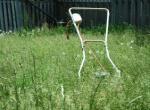I’m excited to have yet another well respected Toastmasters and gifted speaking coach share her expertise with all of us. Please feel free to share your thoughts and comments below! Susan- thank you for your contributions. For all of my Toastmasters friends, Susan was referenced in the most March 2013 Toastmasters Magazine article, “When Bad Speeches Happen to Good People.” Congratulations on all of your success, and thanks again!
If You Can Make a List, You Can Write a Speech
If you’re like most people I meet, you make lists every day. “To-Do” lists are a regular favorite. There are lists of activities; lists of things to take when you travel; lists of projects you’ve worked on.
The similarity between all of these lists is that you jot down one word or two and then you know the whole story behind those short words.
If you can make a list, you can write a speech. Why? Because just like these lists, each word you list for your speech represents content you already know. When you see the word, you know what to say.
The number one barrier to gaining confidence and success as a speaker is that you spend too much time writing and not enough time practicing and rehearsing. My clients regularly report that when they practice/rehearse 10 times or more, they actually feel their own improvement grow from within.
My pie of time approach recommends allocating 40% of your time on content and 60% of your time practicing and rehearsing. You can easily hit the 40% mark if you use your list-making skills to create and organize your content. Don’t write everything out; simply rely on the one or two word note to prompt yourself to speak about what you already know.
Download my Write a Speech Now model to help you get ideas about the kinds of varied content you should include on your list.
Post your thoughts in our comment box about how list-making will help you with speech writing.
Contact Information:
Susan G. Trivers
https://www.susantrivers.com/
susan@susantrivers.com
703-790-1424
1651 East Avenue, McLean, VA 22101


